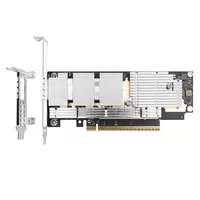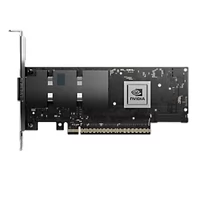NVIDIA’s ConnectX-7 400Gb Ethernet Adapter boasts PCIe 5.0 x16 and OSFP network solutions, which offer the most advanced data center networking features. The modern adapter has been developed to cater for intensive user needs associated with cloud computing, artificial intelligence, as well as deep learning. Moreover, the ConnectX-7 increases the amount of data transmission and augments computer processing by providing fast connection and lower latency network solutions. The scope of this paper is broad and seeks to determine the technological features of the ConnectX-7, how it revolutionizes network systems efficiency, and in what systems it can facilitate data management. Our goal is to explain, in detail, the analysis of this network infrastructure-focused technology and how it can be used for future developments.
Table of Contents
ToggleWhat does a 400 GB network adapter do?
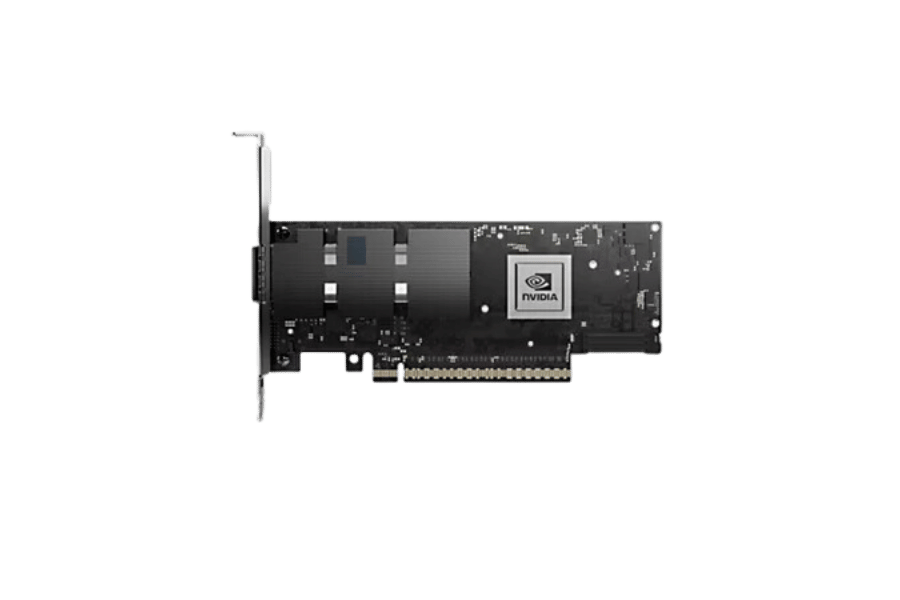
Looking at the function of networks in the context of a data center
Networks within data centers are the arteries of the modern computing paradigm, as they integrate servers, storage systems, and external networks, including Connectx-7 controlled networks. Such intricate networks are created to move and manage resources and workloads with exceptional levels of efficiency commensurate to the vast amounts of information that must be moved. The 400Gb network adapter, for example, NVIDIA ConnectX-7, facilitates these activities as it achieves high-performance speeds and reduces data transfer rate, reducing the delay and adding to the overall throughput. These are critical features for the effective execution of resource-demanding systems such as cloud systems, big data processing, and artificial intelligence that need prompt, reliable data access and subsequent processing. The growth in the network technology trends not only improves the operational capability of the device at hand but also augments the effectiveness of the operations of the entire data center.
Core Characteristics of the 400GB Ethernet NIC
The 400GB Ethernet NIC, including the NVIDIA ConnectX-7, integrates several essential elements that make it highly valuable in modern data centers. First, it has ultra-high bandwidth capacity that allows for fast processing of large amounts of data. The low-latency of the device is important in most applications where quick data interchange with very short or no delays is required. The NIC also incorporates additional hardware accelerations and offload functions that help to reduce CPU operational load, thereby improving task performance in terms of hyperscale cloud data requirements. Certain security measures are also part of the package, including security-enhanced features like encryption and secure boot which would further enhance data safety. The NIC also has provisions for RDMA (Remote Direct Memory Access) technology that allows greater efficiency in data transfer by permitting direct memory access bypassing the CPU, thus increasing throughput while reducing latency. Collectively, these features ensure the flexibility and survivability of networking infrastructures in the face of rapidly developing technological conditions.
Reasons for Employing PCIE 5.0 X16 Slots
Regarding the use of PCIe 5.0 x16 slots in data-oriented environments, several merits are very important for the undertaking of next-generation applications and services, especially hyperscale cloud datacenter infrastructures. To begin with, PCI express interface cards marked PCIe 5.0 X16 brackets are a prospective development that guarantees higher bandwidth two times higher than that of the previous generation, which amplifies the capabilities of external High-Speed Networking hardware units like 400GB Ethernet NIC. Such throughput improvements are particularly important for fulfilling workloads with stringent latency requirements and data rates like real-time analytics and high-end computing tasks. It is also noteworthy that the backward compatibility features of PCIE 5.0 enhance its chances of integration into existing structural designs, allowing ease of upgrade of systems to more modern ones with minimal challenges. A resultant improvement in signal integrity associated with the PCIE 5.0 slot expansion card leads to improved electrical performance, thus ensuring more robust, accurate, and trouble-free data transfer while enhancing system architecture operating limits. In summary, these characteristics make PCIE 5.0 X16 slots fundamental resources necessary for enhancing the performance and scalability of data centers.
How does the network performance of the Nvidia ConnectX-7 work?
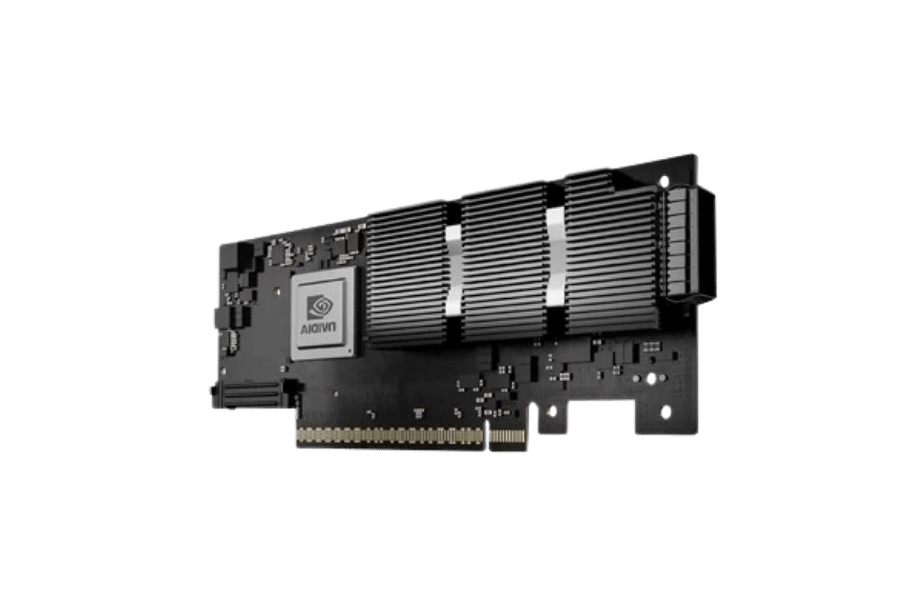
New Innovations Of Nvidia Mellanox
Nvidia Mellanox innovations, particularly the ConnectX-7 Network adapter, increase the network performance thanks to the functional features and capabilities. One of the best new features of ConnectX-7 is its support for PCIe 5.0, which increases bandwidth and data delivery performance and is ideal for most demanding environments. In addition, ConnectX-7 supports hardware offload for RDMA over Converged Ethernet (RoCE), which reduces CPU utilization, enabling greater data throughput and efficiency. The advanced flow steering capability of the adapter, along with its intelligent traffic management and error management features, helps to improve the network performance and reliability, making it more suited for modern data centers, which are designed to be very effective and fast.
The Comparison of ConnectX®-7 with Older Models
The ConnectX®-7 is said to have several features that Offer thrust advancement over its predecessors. To begin with, the ConnectX-7 incorporates PCIe version 5.0 technology, which enables increased bandwidth compared to models that operated on PCIe 4.0, and this results in an improvement in data handling capabilities and a considerable reduction in latency. This generation also integrates better hardware RDMA over Converged Ethernet (RoCE), which makes networks more efficient and reduces CPU utilization compared to previous generations. Moreover, intelligent traffic steering and flow management also enhance the system’s performance and make the network more reliable. ConnectX-6 models that did not incorporate these improvements have been rendered obsolete by ConnectX-7, which is a significant upgrade. Overall, the ConnectX-7 guarantees better performance metrics that can handle the demands of the current computing environments that require high performance.
Secure Boot and Crypto Technologies Have an Effect
Data centers are supposed to be modern buildings that boast their own benchmarks – secure boot and cryptographic technologies enable one in an organization. The secure boot feature in a computer ensures that, during the boot process, only encrypted and signed software can be executed. This way, a device can address low-level malware challenges. This also confirms each and every piece of code, including firmware and drivers, and creates a trusting relationship between hardware and software systems. Importantly, other advanced computer technologies, such as encryption algorithms, ensure that data is well protected from unauthorized persons. Consequently, these technologies increase the chances of the data center’s information being compromised or accessed without authorization, increasing the sustainable operational integrity of the network.
What Specific Distinctions Are Present in Single-Port OSFP PCIE 5.0 X16 about Your Needs?
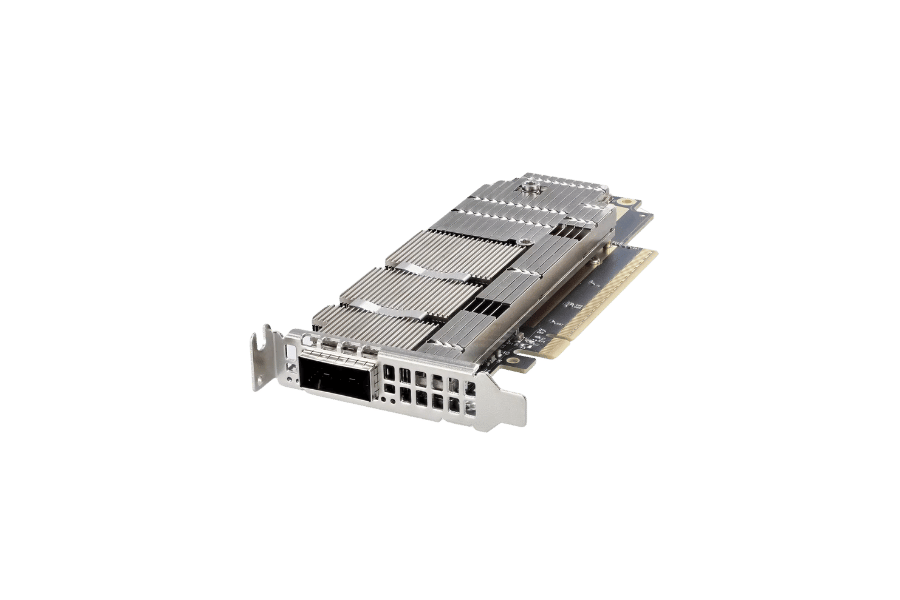
Strength of a Single-Port OSFP Configuration
When weighing the advantages of the Single-Port OSFP PCIe 5.0 x16 architecture, several things can be highlighted, taken from the best resources online. First of all, the design incorporates a bandwidth capacity that is above the average, enabling mostly complex usage of high-speed data transfer. Also, a single port design facilitates easier and less complex construction of the hardware, which may result in lower power consumption levels and easier thermal management, which are necessary when working under high-performance conditions involving large amounts of data. In addition, the compact overall dimension helps to reduce the physical volume occupied by the systems in data centers, thus improving efficiency by allowing more systems to be integrated in a given area. Overall, the Single-Port OSFP design meets the ever-growing demands for efficiency, speed, and scalability that come with the advancement of computing infrastructure.
How 400G Can Help in the Optimization of Bandwidth
The Single-Port OSFP PCIe 5.0 x16 interface, when combined with 400G capabilities, provides an exceptionally efficient bandwidth throughput that is important for data-oriented processes. Such capabilities are paramount in places needing a high request for data, such as cloud computing, big data, and Artificial Intelligence systems. The advances seen in 400G bandwidths ensure that users experience low latency and near real-time processing and transmission operations. In addition, enabling such bandwidths, and therefore capabilities, allows infrastructure to cope with ever-increasing amounts of data in the future without having to change much hardware, which allows for gradual growth in performance and scalability at a lower cost.
Exploring Mellanox MCX75310AAS-NEAT ConnectX-7 Features
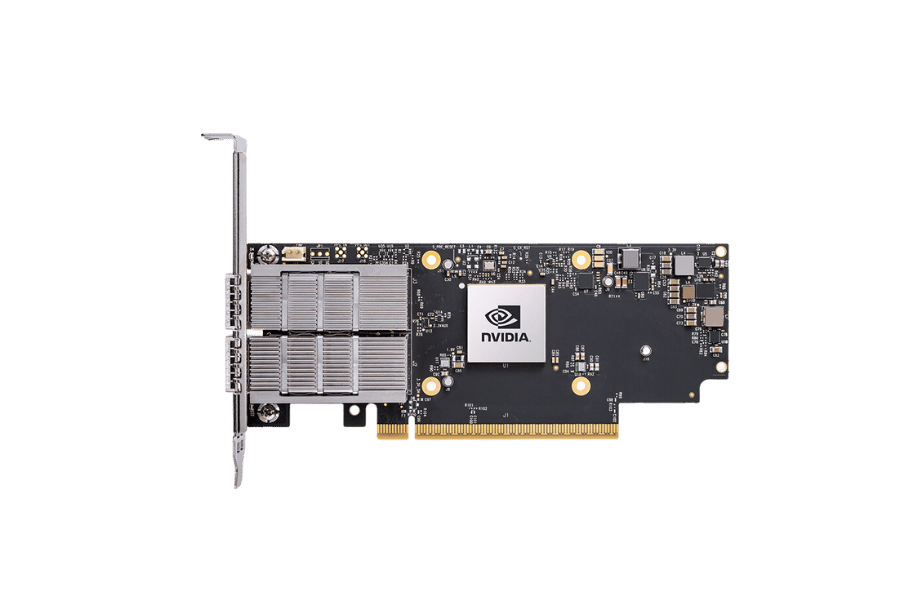
Review of MCX75310AAS-NEAT Specifications
The Mellanox MCX75310AAS-NEAT ConnectX-7 features include the following specifications:
- Interface Type: The card supports PCIe 5.0 x16 interface, ensuring high-speed data transfer and robust connectivity.
- BandwidthIt offers 400G capabilities, facilitating high bandwidth utilization for demanding data environments, particularly in hyperscale cloud data applications.
- Port Configuration: Designed with a Single-Port OSFP for improved hardware layout and reduced power consumption.
- Enhanced Performance: Optimized for applications requiring real-time data processing, including AI and big data analytics.
- Physical DesignCompact build enhances space efficiency and is ideal for dense data center environments, especially those utilizing 400G Ethernet for high-speed connectivity.
- Scalability: Future-proof design accommodates increasing data demands, minimizing the need for frequent upgrades.
Combining Infiniband And Ethernet Systems
Mellanox MCX75310AAS-NEAT ConnectX-7 Infiniband and Ethernet systems make use of the high throughput and low latency features available in such standards. The dual implementation provides an all-round deployment of different networks, thereby connecting different IT infrastructures seamlessly. The ConnectX-7 and ConnectX-7 integration into Infiniband systems boosts data bandwidth and increases high-performance computing system architecture scalability. Ethernet systems perform this function equally well, making it ideal for modern data centers that need bandwidth-intensive and non-disruptive communications. This capability enhances improved operational flexibility and helps ensure that as networks change, they remain relevant.
What is This NDR Infiniband Technology and Why Is It Considered Such an Important Development?
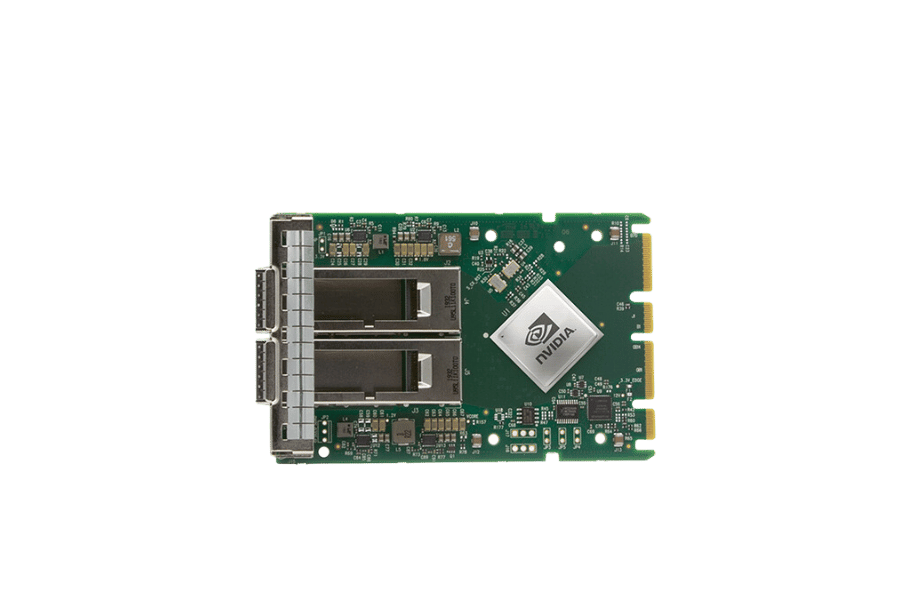
Defining NDR Connectivity Technology Enhancements
NDR (NVIDIA Data Rate) Technology has taken network connectivity to the next level by multiplying data transfer rates by four hundred up to 400Gb/s. Such a bandwidth increase drastically impacts high-performance computing and other data-rich applications. NDR technology offers its users numerous key features, such as reduced latency which is important for real-time interactive data applications, and higher levels of data compression so that there is no wastage of all the available bandwidth. In addition, NDR technology has better data correction capabilities, allowing high-speed data transfer without the risk of losing any information. Its deployment allows data centers to cope with the current challenges of the exponential growth of data volumes and increasing workload performance requirements, which fully secures the place of NDR within the next-gen networks.
Leveraging PCIE 5.0 X16 for Increased Data Transfer
PCIe 5.0 X16, on the other hand, is a great starting point for supporting the increasing need for data transfer since it affords twice the bandwidth capacity that pci 4.0 provided. This version has a maximum data transfer rate of up to 64 GT/s, which makes it suitable for demanding applications that require high throughput. This basic architecture maximizes line usage and minimizes delay, which directly helps activities with large data transfers, such as real-time analysis, machine learning, and AI-related calculations. PCIe 5.0 X16 also boosts the total performance and capacity of high-performance computing systems, and by providing quicker processors to high-speed network device communication, PCIe 5.0 X16 is vital in delivering the growing pressures of contemporary data-intensive tasks.
Reference Sources
Frequently Asked Questions (FAQs)
Q: What can the NVIDIA ConnectX-7 400Gb Ethernet Adapter – PCIe 5.0 x16 OSFP provide with regards to Connecting Networks?
A: The NVIDIA ConnectX-7 400Gb Ethernet Adapter is essentially a network adapter card designed to interconnect with 400GbE connectivity. It employs a PCIe 5.0 x16 interface and OSFP connectors, providing extremely low latency and high-performance NVIDIA in-network computing engines.
Q: What about the most important specifications or features of the MCX75310AAS-NEAT adapter?
A: MCX75310AAS-NEAT adapter is an extremely powerful multi-protocol featuring a Networking Adapter with InfiniBand and Ethernet with 400GbE speeds with PCIe 5.0 x16 form factor. Furthermore, ultra-low latency, high throughput, and advanced features were incorporated to be used in very harsh Data Center environments.
Q: Should the NVIDIA Mellanox MCX75510AAS-NEAT be used in environments featuring InfiniBand?
A: The NVIDIA Mellanox MCX75510AAS-NEAT is fully an InfiniBand adapter designed for both InfiniBand and Ethernet protocols, allowing for versatile features designed for various High-Performance Computing and Data Centre environments.
Q: Which type of bracket is used with this adapter card?
A: This adapter card comes with a tall bracket suitable for normal server chassis. If small form factor servers need a low-profile bracket, you may need to check with us on availability and compatibility.
Q: What advantages arise from wearing a 400GbE network interface?
A: A 400GbE network interface, such as this ConnectX-7 adapter, has several advantages, such as high bandwidth, low network congestion, better application performance, and more efficient management of data-intensive workloads in contemporary data centers and high-performance computing environments.
Q: What is the significance of the PCIe 5.0 x16 interface in a network?
A: The PCIe 5.0 x16 interface has a remarkable high band, which is an advantage over the previous PCIe generations. Because of this, the full potential of the NVIDIA ConnectX-7 400Gb Ethernet Adapter can be fulfilled since this adapter is a 400GbE Ethernet adapter. Thus, this adapter allows for greater data transfer rates, less latency, and improved networking per se.
Q: From where can I bring the NVIDIA ConnectX-7 400Gb Ethernet Adapter?
A: The NVIDIA ConnectX-7 400Gb Ethernet Adapter can be bought from many NVIDIAs authorized partners and resellers. It can also be found on FS.com Europe and other networking equipment suppliers, including those dealing with InfiniBand and Ethernet. Regarding availability and prices for the product, please contact us or look at the NVIDIA site, where we can also purchase the advanced technology required for efficient networking.
Q: What features put the NVIDIA ConnectX-7 adapter above other networking options?
A: The NVIDIA ConnectX-7 adapter is unique in that it’s based on technology that is rich in features, including 400GbE, low latency, and unique NVIDIA computing engines in network. It is also Ethernet and InfiniBand compatible. It offers the most advanced networking capabilities and is suited for applications in data centers and high-end computing environments.

